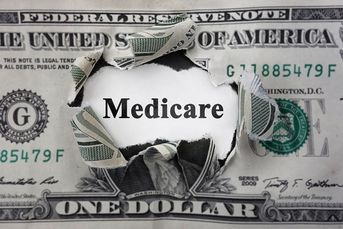Make Medicare easier by using auto pay
Auto payment can help limit the chance of coverage lapses and reinstatement penalties down the road.
Summertime is the time to kick back, relax and take it easy. Whether you are on Medicare yourself or are a caregiver for someone who is, one thing you can do to make things easier is to set up auto payment of premiums. Using auto payment for premiums will make Medicare simpler and limit the chance of coverage lapses and reinstatement penalties down the road.
Medicare Part A has no premium for most people. The other parts of Medicare — including Medicare Parts B, C and D — do require premiums. Medigap coverage requires premiums as well. Circumstances such as extensive travel, relocation, forgetfulness or serious illness can interrupt premium payment disbursements.
People often are unaware of overdue payment notices for the same reasons. If payments lapse beyond the grace period, coverage is lost. When that happens, the person has put themselves in a very difficult position. Lack of coverage often becomes apparent when medical bills and prescription drugs are not covered, resulting in costs becoming the personal responsibility of the beneficiary.
It is relatively easy to prevent these problems by setting up premium auto payments. Some Medicare premiums can be automatically deducted from Social Security if the person receives benefits. Others cannot.
Additionally, some folks are not receiving benefits yet or prefer not to have premiums deducted from their benefits. Here are some auto payment options:
Medicare B premiums are automatically deducted from Social Security retirement benefits if a person is receiving them. Given that it is more and more common for individuals to delay taking Social Security retirement benefits, it is increasingly typical that people receive Medicare B premium bills. Those bills can be paid by setting up an auto payment method:
• Medicare Easy Pay is an auto payment offering by Medicare. It is a free, electronic payment option that allows people to have their Medicare premium payments automatically deducted from a savings or checking account each month. Year over year premium payment amounts are automatically adjusted by the Medicare Easy Pay system, eliminating the need for the beneficiary or a caregiver to make this adjustment manually.
• Premiums can be set up for auto payment through an online banking debit system. Make sure to update the Medicare B premium payment amount in the online system whenever there is a change, e.g., in January each year if rates increase.
• People who pay Medicare Part A premiums can also use these auto payment options.
Medicare Parts D and C, also known as Medicare Advantage Plans, can be set up for automatic deduction from Social Security benefit payments.
• Timing can be tricky if people change their Medicare Part D or C plan late in the annual enrollment period. If that is the case, double check with the insurer to determine if the January payment needs to be made before the auto deduction plan goes into effect.
• Payments can also be made via automatic bank debit through an online bill payment system. Make sure to update the new premium payment amount if there is a year over year increase, which is often the case.
Medicare Parts D and C premium notices are sent out by the insurer near the end of September each year and are effective January 1 of the following year.
Medigap premiums cannot be deducted automatically from Social Security benefits. They can be set up as automatic bank drafts. When annual premium notices are sent out in the fall each year, the premium amount needs to be adjusted for January 1 of the following year.
Some people are worried about auto payment systems because of the potential for identity theft. While that is understandable, the risks of nonpayment may have bigger costs than using proper online security and banking procedures. For some, it is a matter of pride and independence to pay their bills on a monthly basis as they always have. Yet they remain at risk for missing a payment.
A helpful safety net in these circumstances is to authorize for the insurer to notify a third-party, such as a caregiver, if coverage goes unpaid and is in danger of lapse. Some companies offer these notices via email and text in addition to traditional mail.
Setting up auto payments and nonpayment notifications takes a little effort up front, yet it pays off by cutting down the time required to attend to these matters. It also limits exposure to costly coverage gaps and penalties. When you use these tips to avoid the pitfalls of premium nonpayment, managing Medicare and having coverage work when it’s needed will be easier than ever!
Katy Votava, Ph.D., R.N., is president of Goodcare.com, a consulting service that works with financial advisers and consumers on health care coverage.
Learn more about reprints and licensing for this article.







